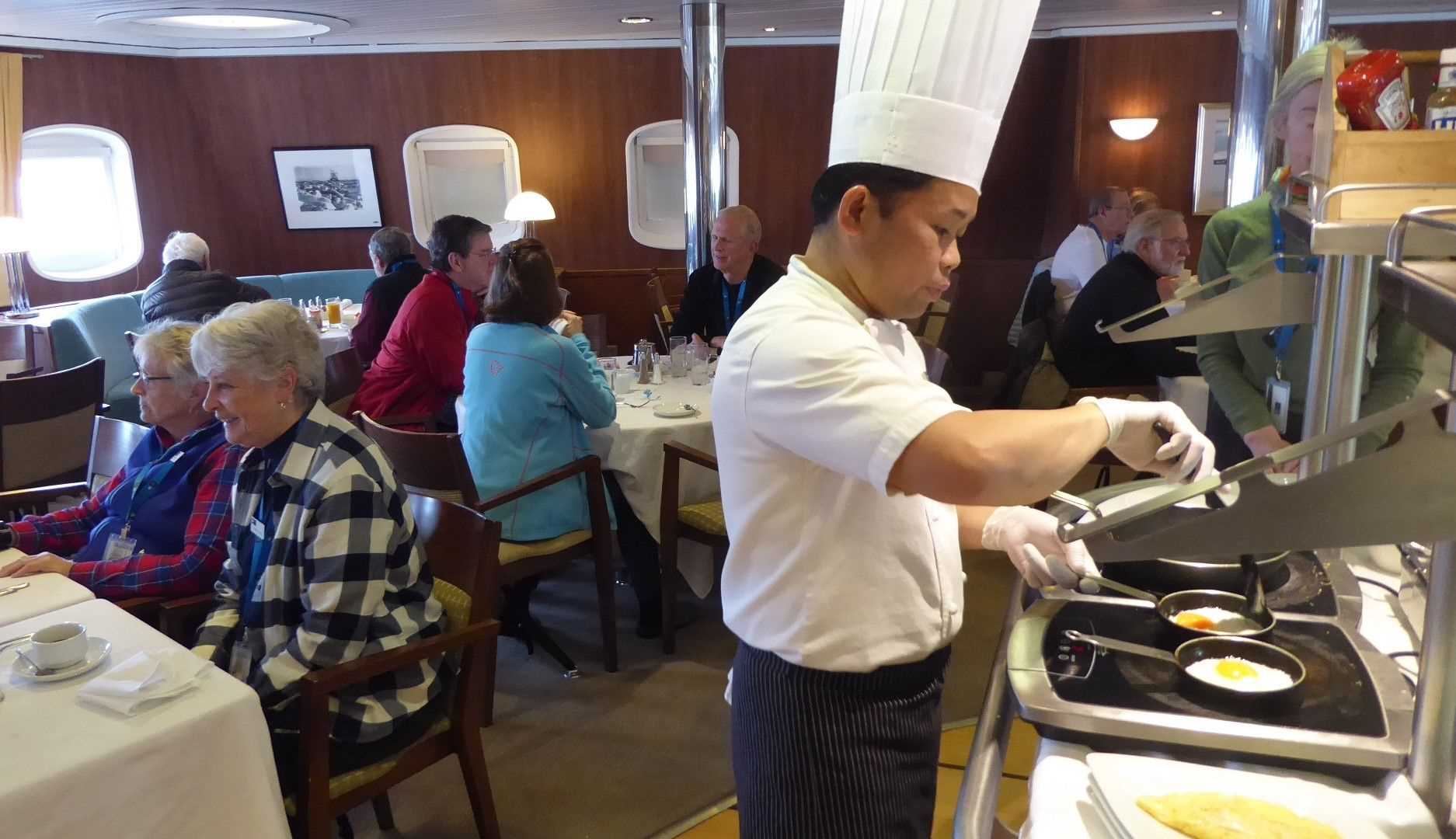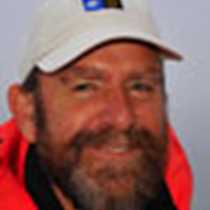We can be proud of our achievements today, for in sighting Cape Horn this morning we marked the end of a successful expedition below the Antarctic Circle and back, with not a single man lost. Shackleton would be proud of us. We have just docked in Ushuaia this evening, and are now safely moored. From Antarctic Circle to full circle, back to where it all began.
For most naturalists, the day starts on the bridge. This morning swells were still running, the wind had dropped, but there was still plenty wind for the albatrosses—we had three species recorded already and the sooty shearwaters racing by beneath them meant we were close to land. Checked the charts—30 miles to Cape Horn! After noting all the seabirds on the bridge whiteboard, it was time for breakfast.
What a deck of delights! Every kind of cereal, fruit, beverage, and hot food you could wish—even a real chef there to conjure up your own favorite omelet. Then before there was even time to down a doughnut we hear the announcement: “Land ahoy—Cape Horn visible on the bow!” Seabird density suddenly increased: Imperial shags flapped past at deck height, giant petrels followed in our wake, albatrosses seemed to be as common as gulls. These are the rich, turbulent, deadly waters that claimed so many ships in the days of sail. We could see the tiny Chilean naval station and lighthouse on Cape Horn Island, and the monument to all those sailors who perished off this jagged southern tip of the continent.
We were transfixed by an old film Round Cape Horn taken in 1929 by Captain Irving Johnson as a young man on a four-masted ship in these same waters. From the lower mast he filmed the decks awash with white water as the vessel Peking weathered a terrible storm at sea, with two crew washed overboard. We counted our blessings, but were still not quite home….
Then at last! Into the sheltered waters of the Beagle Channel where there were wildlife treats in store. Sei whales in the channel, flocks of imperial shags, the stubby heads of South American sea lions and for those with sharp eyes, our fourth penguin, the Magellanic penguins floating low in the water that dove at our approach. But the biggest shock was to see a green fuzz on the shoreline—trees! Our ten-day adventure felt more like a two-month expedition we have seen so much; but the only green was Prasiola, a soil alga that was under our boots. The day was rounded off with the Captain’s Farewell, and a lavish end-of-expedition dinner. Tomorrow we will be back in a world of cars, hotels, airports, and jet planes, still dreaming of the White South.







